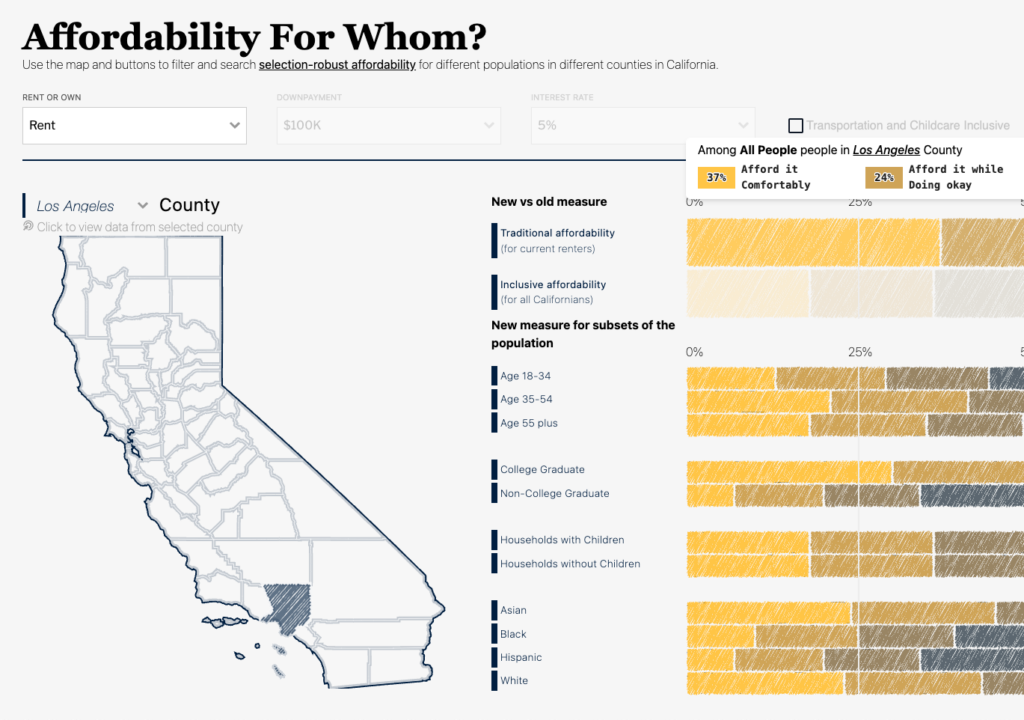Addressing Housing’s Critical Role as Infrastructure
Published On April 23, 2021
Most Americans are painfully aware that the country’s physical assets—its infrastructure—are in bad shape and need new investments. The potential traction in Washington DC around a new federal infrastructure package is a testament to this need. The roads and bridges we drive over, the trains and buses we use to get to work and back, and the pipes and systems that provide clean drinking water are all parts of this infrastructure that we understand is important to our health and the country’s economy. But no part of the built environment more directly affects our daily lives than our homes, and America’s housing supply is in trouble.
The nation’s supply of housing represents a significant share of investments made in physical infrastructure. Total capital investment in housing in 2020 was estimated to total $36.2 trillion,1 comprising nearly 140 million homes.2 Housing is also a vital component of the country’s economy, contributing nearly a fifth of the nation’s GDP through residential investment (3 to 5 percent) and housing consumption (12 to 13 percent).3
As the Terner Center has previously documented, new housing production has fallen well behind household growth in recent years, with an annual shortfall of at least 150,000 newly constructed units relative to long-term historical averages.4 Lagging production of new homes and apartments reflects several factors, including hangover from the Great Recession and disruptions caused by the COVID-19 pandemic, rising labor, land, and material costs that make it more expensive to build, as well as increasingly restrictive local land use policies. Add to this grim picture an existing housing stock that continues to need significant investments to remain habitable—most notably including a public housing inventory that has been starved of funding for most of the last half-century while housing more than 1 million residents—and the underpinnings of what has become a genuine crisis in housing supply is clear.5
Recognizing housing’s role as critical national infrastructure is not new. When the U.S. faced the challenge of recovering from the Great Depression, housing was a leading part of the solution. The Federal Housing Administration (FHA) was created to jump start the housing and banking economy. Federal funding for public housing in its current form first was authorized shortly thereafter in 1937. In 1949, on the heels of the wartime economy and exploding demand for housing by returning veterans and war-weary civilian workers, Congress greatly expanded public housing and created the Urban Renewal program to attack substandard housing and community blight. Though very much inequitable and imperfect in their implementation, these investments in the country’s housing infrastructure were understood to be critical factors in re-starting the economy while improving living standards for millions. They predate the creation of the Interstate Highway program, perhaps the most iconic of federal infrastructure efforts.
The Biden-Harris Administration’s recent American Jobs Plan represents an historic reaffirmation that housing is a critical part of the nation’s infrastructure. It proposes $213 billion for housing, including $40 billion in modernization and rehabilitation funding for public housing and $20 billion to spur homeownership in underserved communities, and direct funding for the construction and rehabilitation of what the administration estimates to be 1.5 million affordable homes.6 While $213 billion may only be a relatively small portion of the more than $2 trillion in total spending called for in the AJP, it’s the biggest promised outlay in affordable housing supply since the Great Depression. And, its inclusion in this historic proposal is both appropriate and badly needed as federal spending to support housing production has suffered for decades. This focus on production—coupled with the administration’s investments in housing assistance that would go directly to households—will make a significant dent in the nation’s affordability crisis.7
However, as we articulated in our recent policy framework Building a Better Ladder of Housing Opportunity in the United States, housing infrastructure’s problems won’t be solved just by increasing funding levels for our existing housing programs. It requires reforms to those investment programs, a rethinking of how we deliver housing assistance directly to families, and changes to the broader regulatory and land use landscape. If we don’t align this infrastructure investment in the context of broader housing policy reforms, we will miss a critical window of opportunity to create a more equitable future.
What reforms are needed? First, we must rethink how we get more housing built, including the kinds of housing being produced and where. That includes adapting, combining, and augmenting existing federal funding programs to create a flexible pool of subsidies that better enable production and preservation of a more diverse set of housing options than the status quo. It includes reassessing existing program requirements and funding formulas used to support the production and preservation of affordable housing. And it includes ensuring that financing tools (e.g., via Fannie Mae, Freddie Mac, the Federal Home Loan Banks, the CDFI Fund, and the Federal Housing Administration) can serve a complementary purpose of assisting in the construction of the types of housing that provide broader affordability without subsidy.
Second, building more homes—even millions more homes—cannot replace the need for vastly increased spending on the demand side of the housing economy. The president’s recent budget request proposes to increase HUD’s housing choice voucher program to increase its support to 2.5 million households from a current service level of 2.3 million families. This is a good first step. But an equitable ladder of housing opportunity will also require significant efforts to increase household incomes, to supplement low incomes with targeted forms of rent relief—in particular by updating the Housing Choice Voucher program—and creating a renter’s tax credit to ensure that tax benefits don’t only accrue to homeowners.
Third, and perhaps most importantly, we need to end exclusionary zoning practices. Today’s housing landscape is the direct result of a long history of land use and zoning policies that have unnecessarily constrained the development of new, denser, and more cost-effective homes. Simply pouring more federal funding into a system that exacerbates racial and economic segregation will not suffice. We recommended re-engagement in tying federal outlays in programs like CDBG and transportation funding to localities’ policies and actions to promote fair access to affordable homes through reasonable zoning policies. The Biden plan proposes a new competitive grant program to encourage such actions, but doesn’t require them. Cities with the worst records of excluding affordable housing will be perfectly happy to pass on this opportunity. The Biden Administration must move more aggressively to require fair share approaches for the most popular forms of state and local funding.
The American Jobs Plan represents an important and critical down payment on a comprehensive effort to fix America’s broken housing system; let’s make the most of this moment to put our country’s housing policy on a better path forward.
Endnotes
- Manhertz, T. (2021). “The U.S. Housing Market Gained More Value in 2020 than in any Year Since 2005.” Zillow. Retrieved from: https://www.zillow.com/research/zillow-total-housing-value-2020-28704/.
- Statista. (2021). “U.S. Housing Market – Statistics & Facts.” Retrieved from: https://www.statista.com/topics/1618/residential-housing-in-the-us/.
- National Association of Home Builders. “Housing’s Contribution to Gross Domestic Product.” Retrieved from: https://www.nahb.org/news-and-economics/housing-economics/housings-economic-impact/housings-contribution-to-gross-domestic-product.
- Kneebone, E. & Trainer, M. (2019). “How Housing Supply Shapes Access to Entry-Level Homeownership.” Terner Center for Housing Innovation. Retrieved from: https://ternercenter.berkeley.edu/wp-content/uploads/pdfs/How_Housing_Supply_Shapes_Access_to_Entry-Level_Homeownership_2019.pdf.
- Kleimann, J. (2020). “Rate lock data suggests $4 trillion in 2020 mortgage origination volume.” Housing Wire. Retrieved from: https://www.housingwire.com/articles/rate-lock-data-suggests-record-4t-in-2020-mortgages; HUD. “Public Housing.” Retrieved from: https://www.hud.gov/program_offices/public_indian_housing/programs/ph.
- “FACT SHEET: The American Jobs Plan.” (2021). Retrieved from: https://www.whitehouse.gov/briefing-room/statements-releases/2021/03/31/fact-sheet-the-american-jobs-plan/.
- These investments come on top of pandemic-related stimulus funding in the CARES Act and American Rescue Plan to directly support renters through Emergency Rental Assistance program funds, supplemental funding for Section 8 and other vouchers to reduce tenant rent burdens, and other support for housing through Community Development Block Grants and HOME grants. The infrastructure package would also add to proposed discretionary spending increases for HUD, as was proposed in the president’s April budget request, and through pending tax changes that the Administration has signaled may include increases to the critical Low-Income Housing Tax Credit program.





